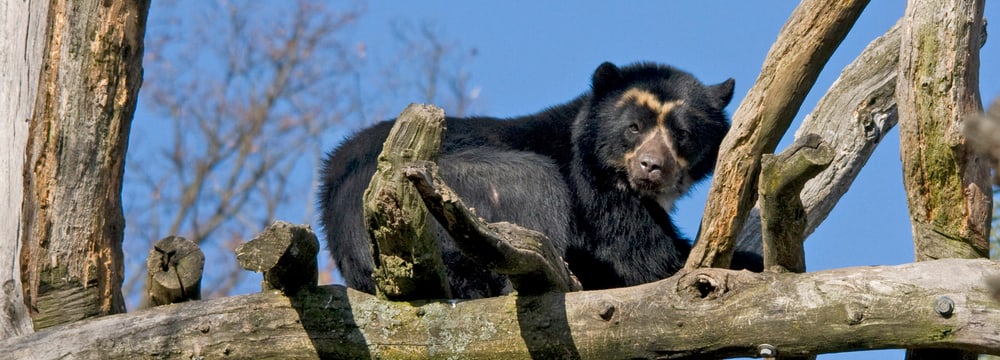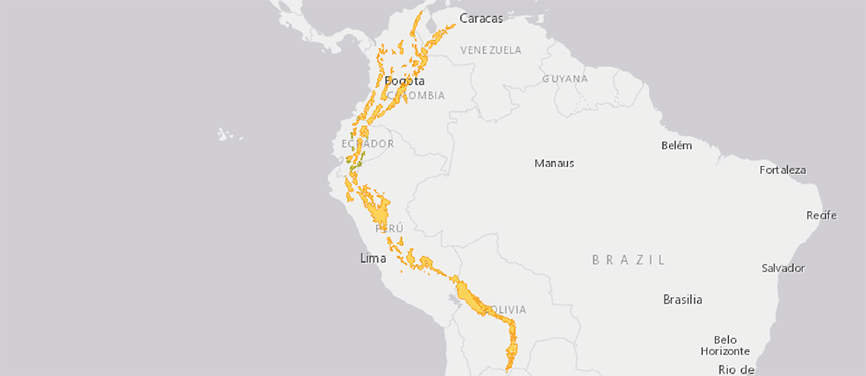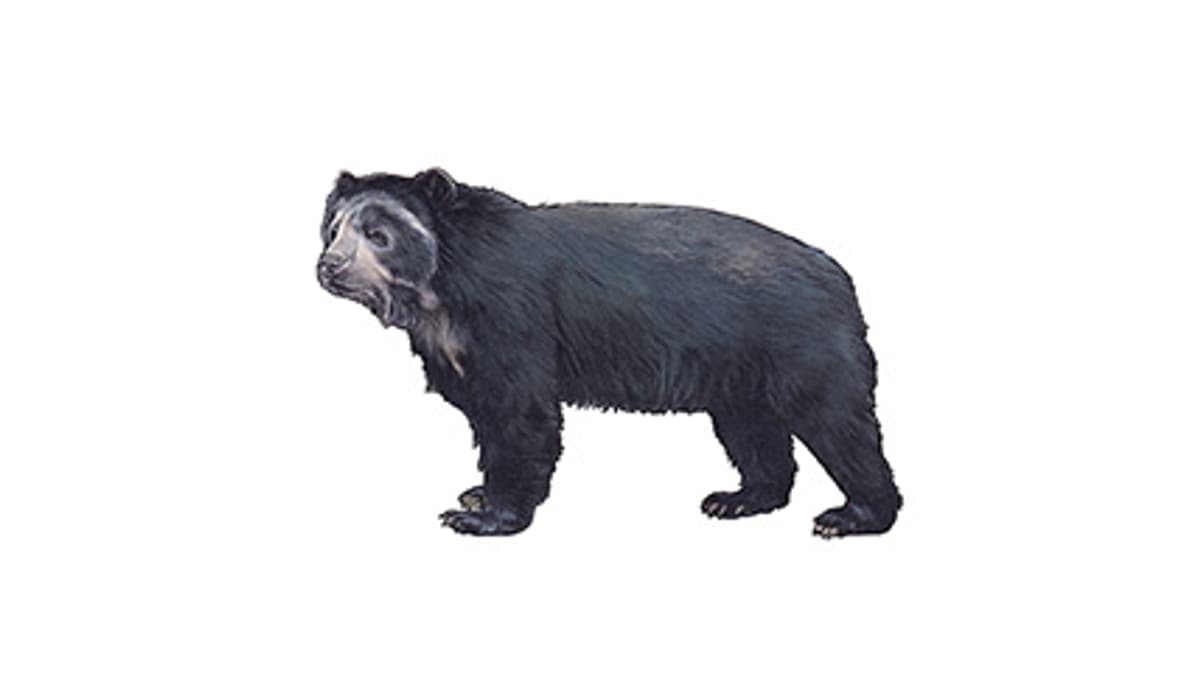
Spectacled Bear
Tremarctos ornatus
The spectacled bear is the only large bear in South America. Spectacled bears are threatened because their habitat in the Andes is increasingly being converted into cattle pastures and encroached upon by road construction and the building of gas pipelines.
The common name spectacled bear (also called Andean bear) in German, French and English comes from the striking facial coloration with bright rings around the eyes. However, the ring is not always equally well developed. Many animals do not have a complete ring and have completely different bright patches of fur around the eyes. For field researchers and zoo visitors, this is an excellent way to distinguish between individuals.
Spectacled bears in the Andes spend up to 70 percent of their activity time foraging for food. This need can also be satisfied in Zurich. Many feeding stations are stocked several times a day by the animal keepers. Food is distributed and buried throughout the enclosure. The animals are constantly on the lookout for food and can thus be kept busy in a manner appropriate to their species. Stereotypies, the monotonous walking back and forth due to a lack of incentives, are a thing of the past in Zurich.
| Related to | Carnivores, caniformia, bears (8 species), short-snouted bears (1 species) |
| Habitat | Humid forests and wet meadows (páramo) up to 4700 meters above sea level |
| Mode of life | Diurnal, foraging on the ground and rarely in trees |
| Social structure | Solitary, in the mating season in pairs, females with young, no distinct territories |
| Diet | Predominantly plants, rarely meat |
| Weight | Females up to 80 kg, males up to 140 kg, newborns 320 to 370 g |
| Head-torso length | 120 - 200 cm |
| Shoulder height | 70 - 90 cm |
| Tail length | 10 cm |
| Gestation time | 160 to 260 days (incl. dormancy), effective gestation period only 60 days |
| Litter size | 1 to 3 young animals, altriciality |
| Age of sexual maturity | At the age of 4 to 5 years |
| Life expectancy | Over 30 years |
| Utilization | Meat and fur, medical purposes |
| Population trend | Less than 25'000 animals |
| At Zurich Zoo since | 1976, 14 reared young animals, internationally coordinated breeding (EEP) |
Distribution

Spectacled Bears (Youtube Playlist)
Animal Voice
Sponsors
| RICA | D. + R. Mosimann, Dietlikon |
| COCHA | D. + R. Mosimann, Dietlikon |
| APU | D. + R. Mosimann, Dietlikon |
| UYUNI | D. + R. Mosimann, Dietlikon |


